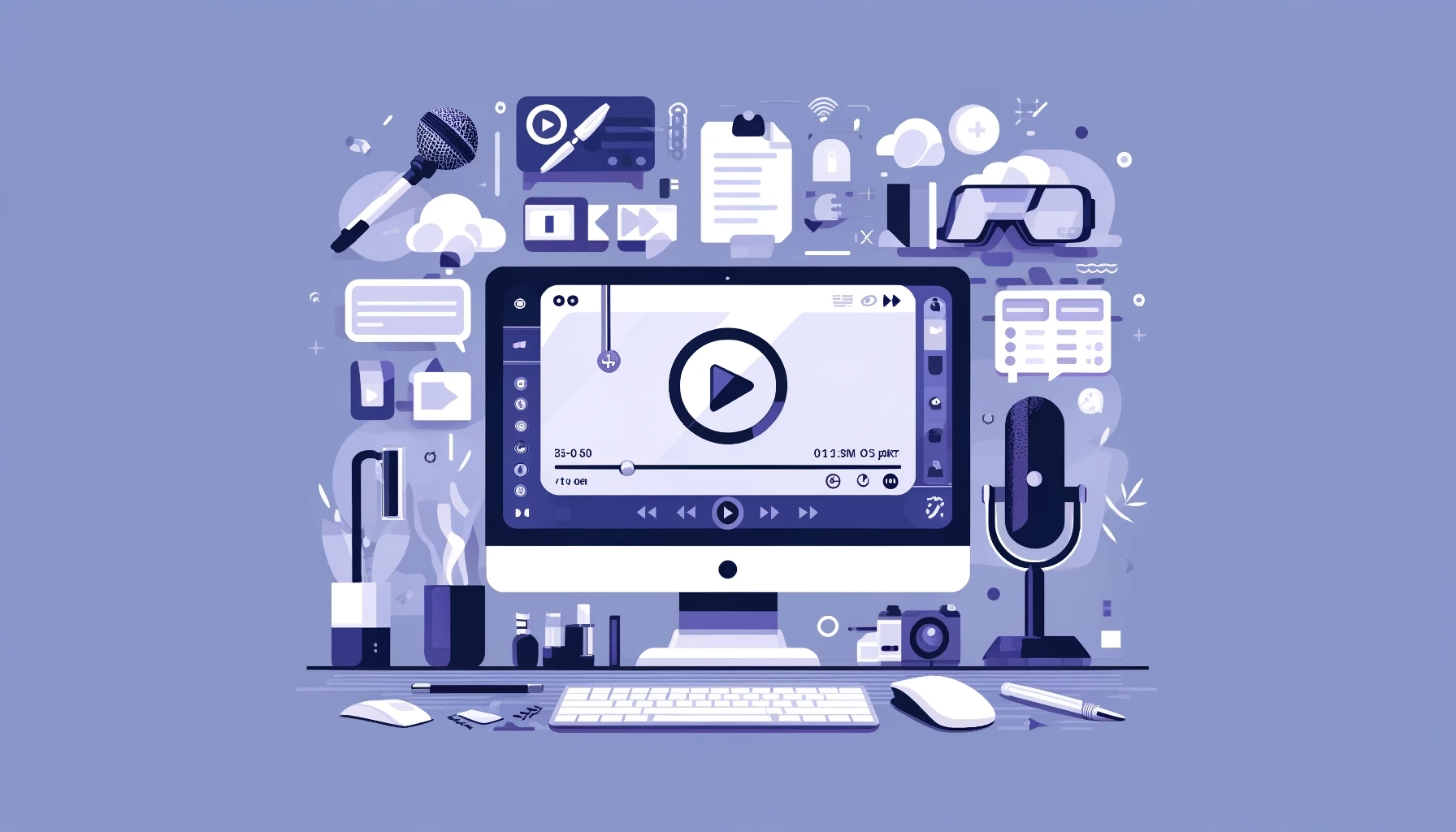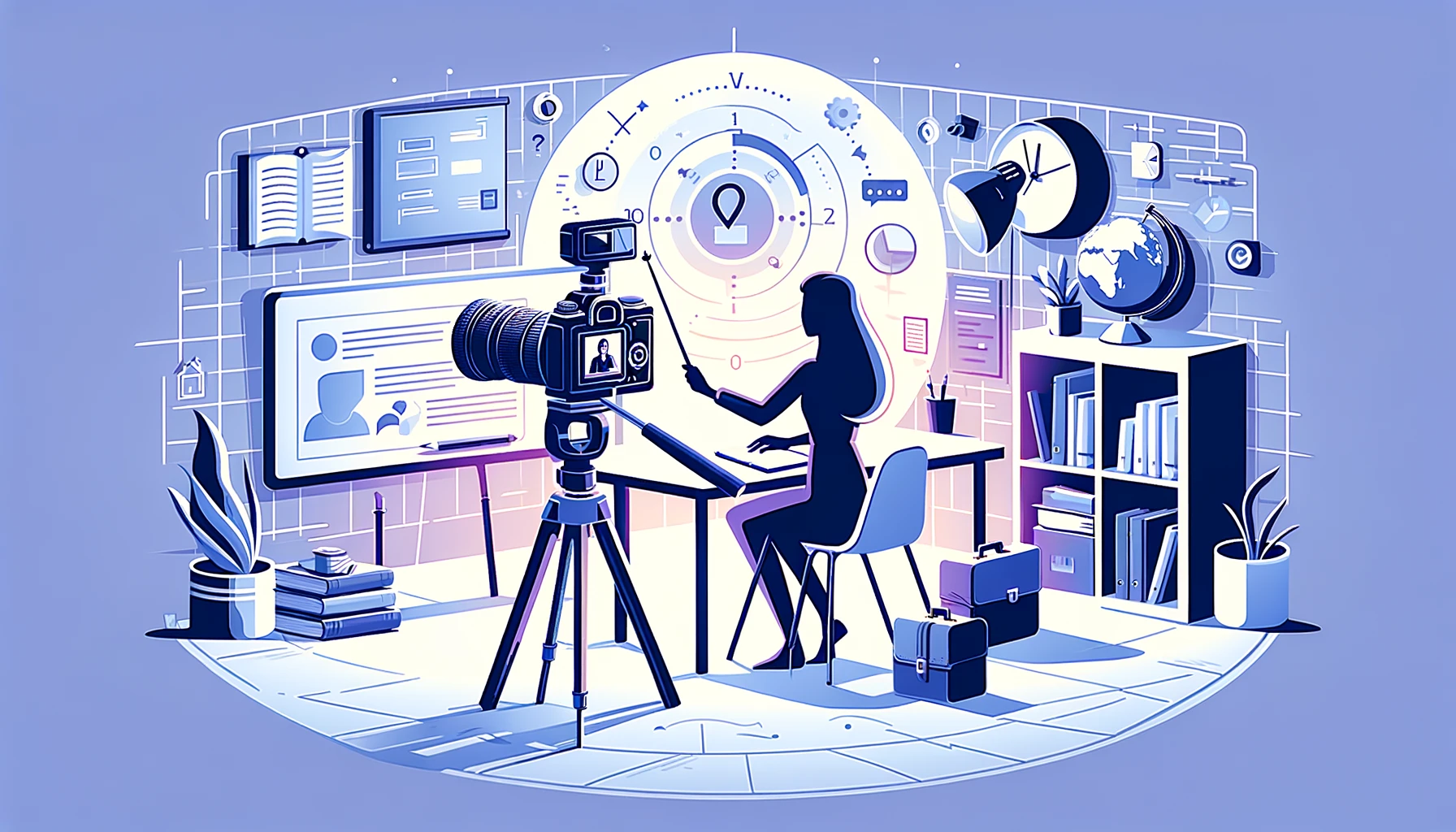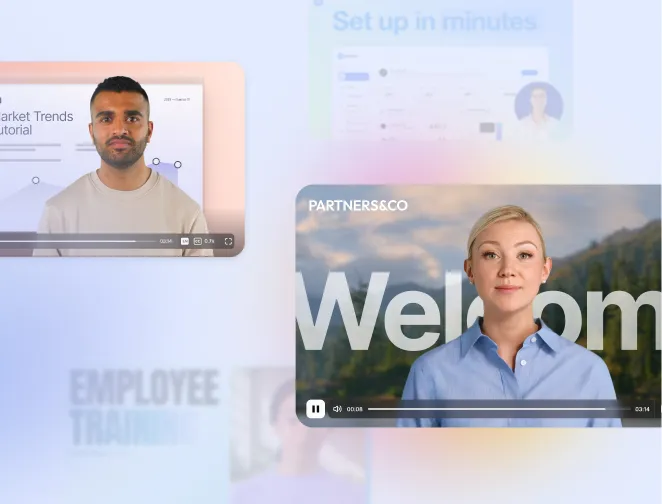
Create AI videos with 230+ avatars in 140+ languages.
Create AI videos with 230+ avatars in 140+ languages
If traditional video shoots are eating days of your time and budget, you're not alone.
But what if you could make the entire process more cost-effective, scalable, and less time-consuming, all without outsourcing the process?
That's exactly what AI video generators do - let users create video content at scale and with no equipment using AI.
In this guide, I'll show you how to make AI videos faster, at scale, and in multiple languages, without actors, cameras, or complex software, using Synthesia.
How to create AI videos
{lite-youtube videoid="7k3N1bUURa4" style="background-image:url('https://img.youtube.com/vi/7k3N1bUURa4/maxresdefault.jpg');" }
Or you can follow the step-by-step guide below👇. Let's get started!
Step 1: Create a new video
Log in to Synthesia, then click 'New video'. You can start from blank or choose one of a wide variety of templates. I recommend you choose a template for the best results. You can customize everything later.
After selecting a template you can click the 'Add scene' button on the left to see the various layout options that come with your chosen template. You can use these scenes to start to build out the structure of your video.
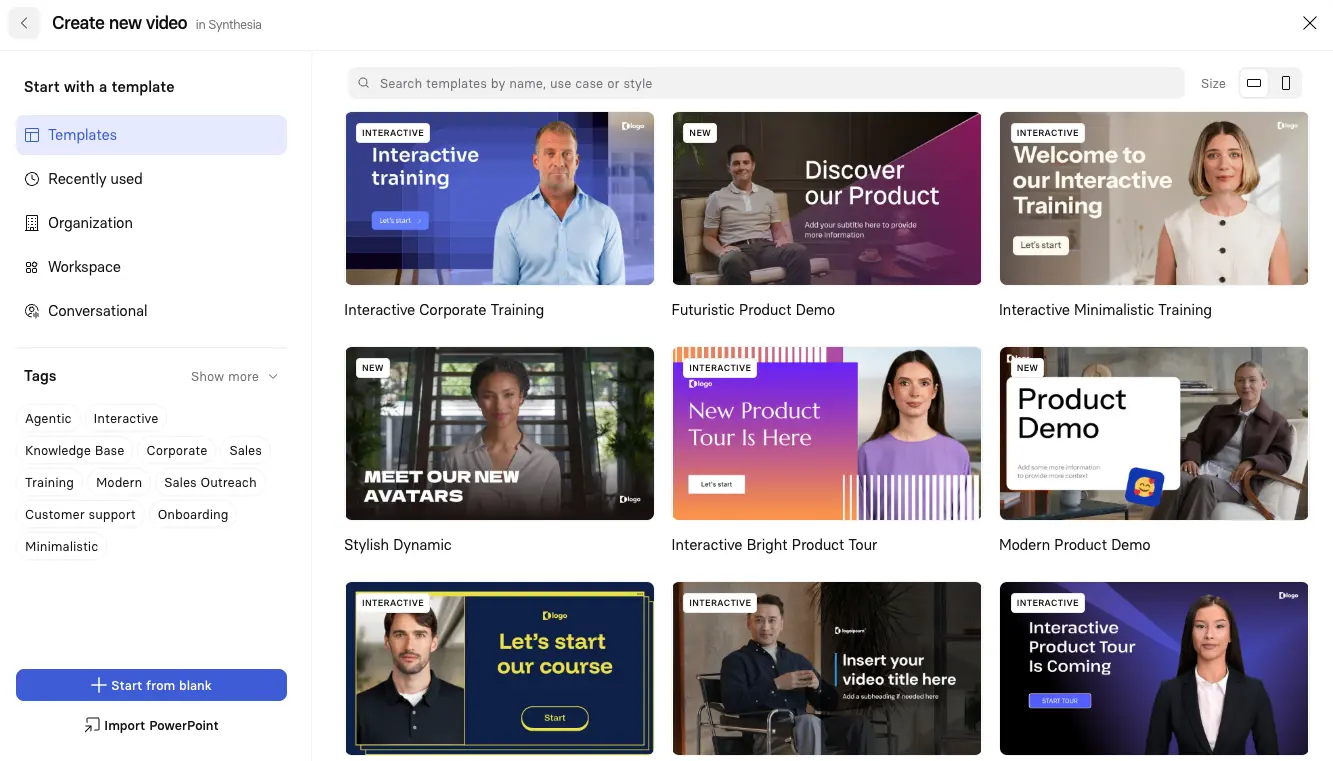
Change aspect ratios in the video size dropdown in the editor if needed.
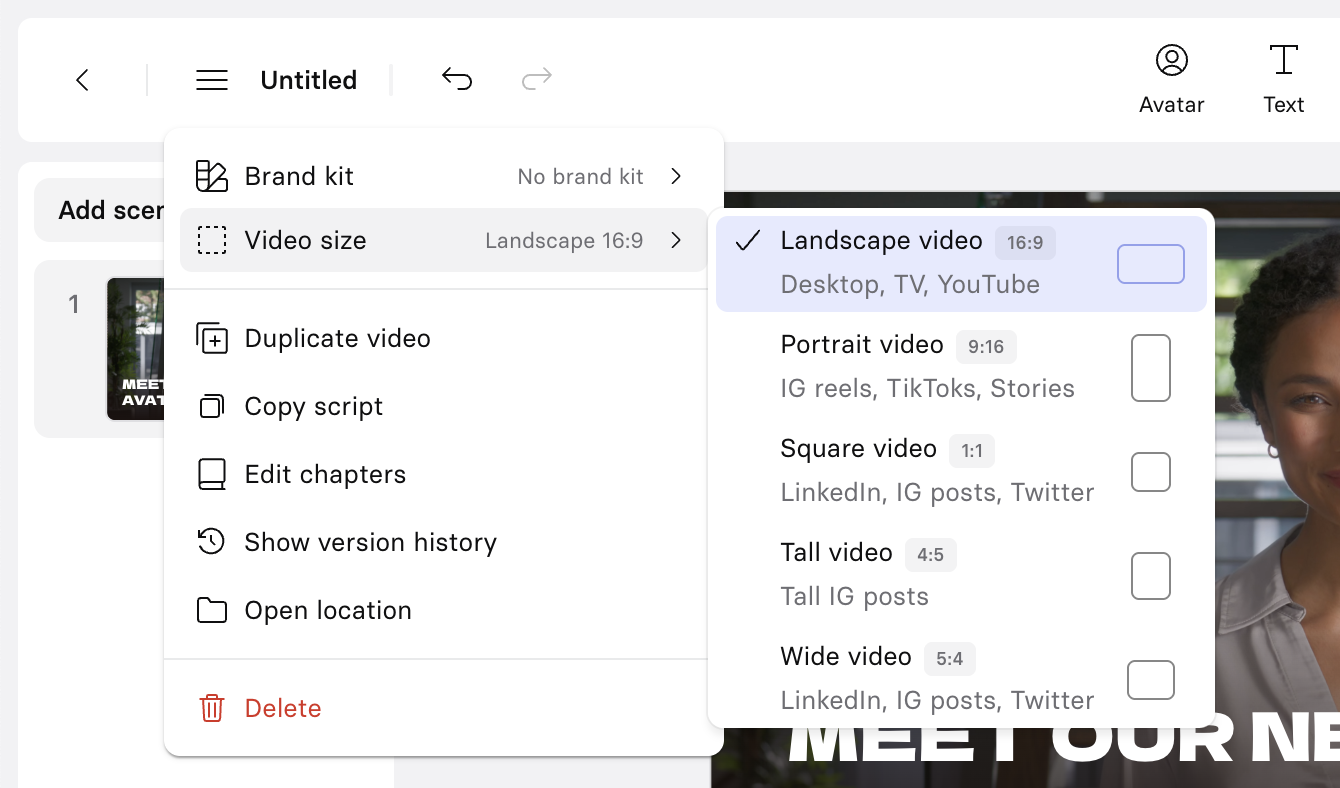
If you have a Brand kit, apply your colors and fonts once and save a custom template for future videos.
Step 2: Paste in your script
Synthesia is an AI video generator based on a text-to-video model, which means that you can create videos just by typing text.
Short on time? Use AI Video Assistant to draft or refine your script from a brief, document, or URL—then edit for tone and accuracy.
Another option is to just upload a document: Synthesia can handle PDF documents, PowerPoint files, Word documents, and TXT files. You can also convert webpages to AI video too.
However, for the best results I recommend you review your text and transform it into a video script. It's not as difficult as it may seem, but it makes a world of difference to the video creation process. We have a dedicated guide to creating video scripts to help you out.
Once you have that ready, copy your video script and paste it into the script box scene by scene. Synthesia will use that text to generate a text-to-speech voiceover for your avatar.
Your avatar can speak in more than 140 languages and accents. You can either type your script in your target language, or type it in another language and translate it later.
The text-to-speech we use is high-quality, but if you find that it's mispronouncing words, you can always adjust the pronunciation and add pauses and emphasis to improve the narration.
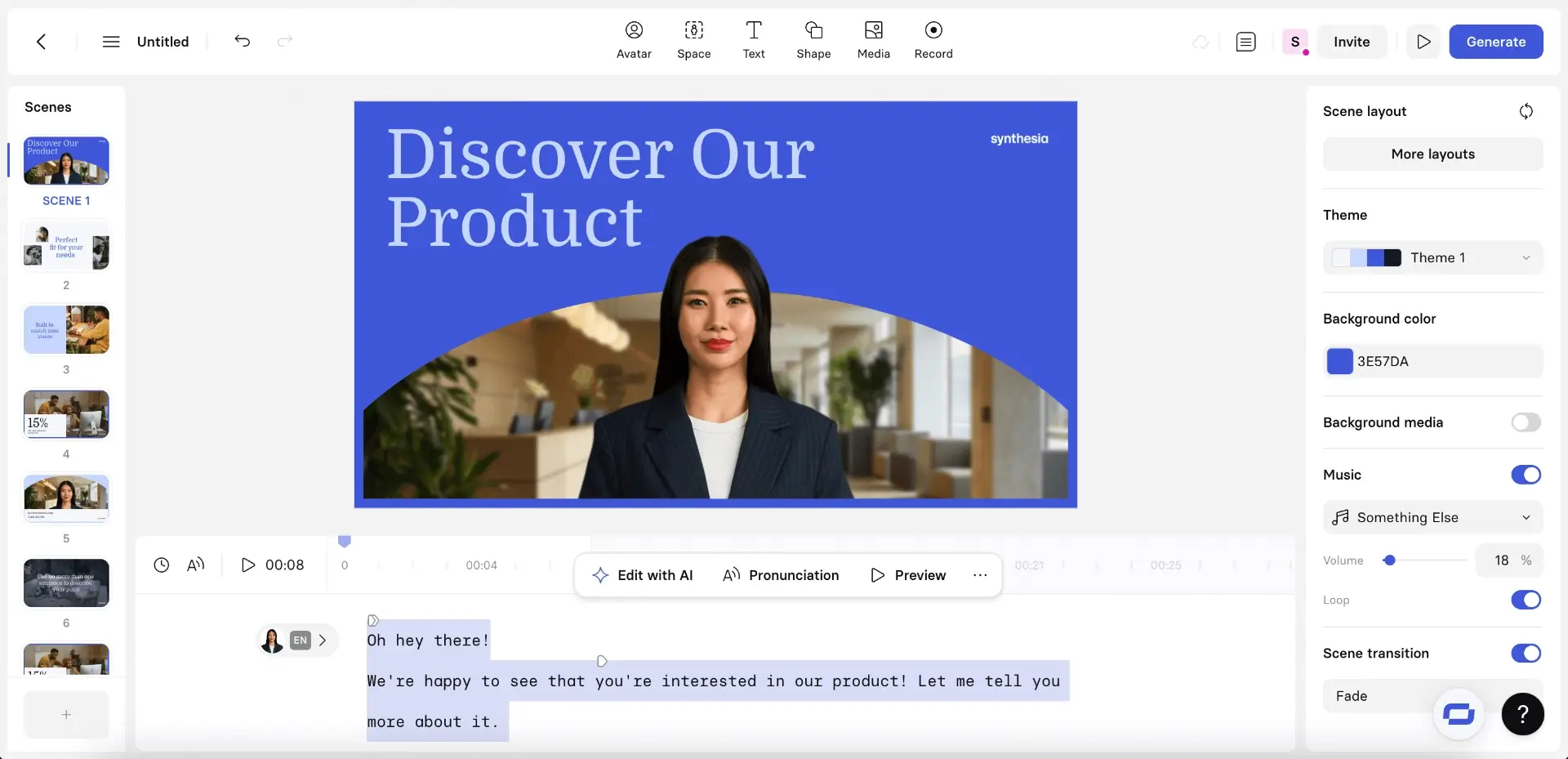
Step 3: Choose an AI avatar
This is where the AI comes in to perform its magic.
In this step, you can choose an AI avatar to act as a narrator/presenter in your video.
There are 240+ diverse AI avatars to choose from, and you can choose where you want the avatar to appear, how large or small it should be or hide it altogether.
To add an AI avatar in Synthesia, click 'Avatar' in the panel on top of the video canvas.
Pick the avatar(s) you want to use and the framing (Full-body, Circle, Box, Voice only). Adjust the position and size of the avatar on the video slide by left-clicking on it with your mouse.
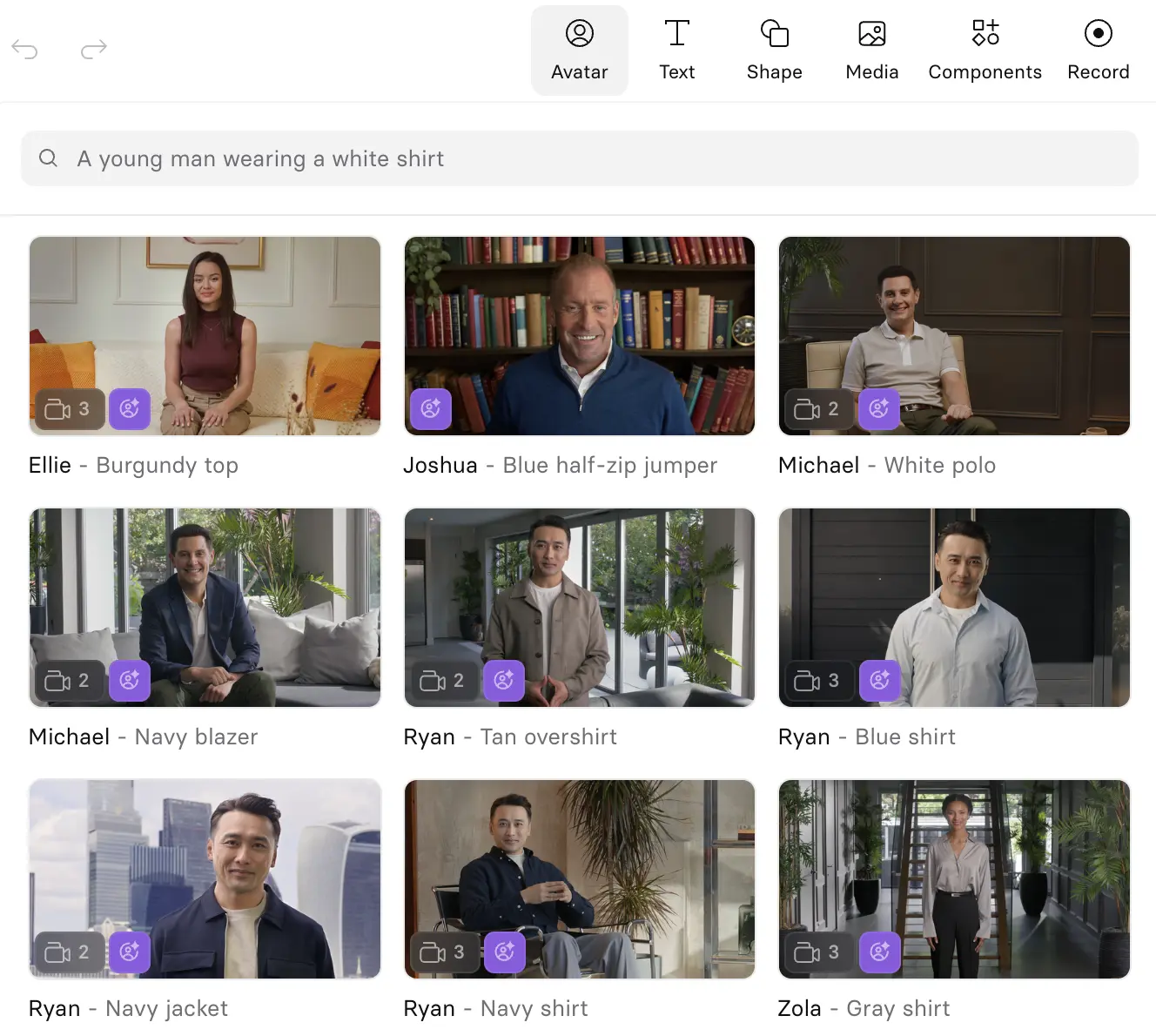
Step 4: Edit the video
It's time for video editing. Luckily, you won't need any fancy video editing software for this.
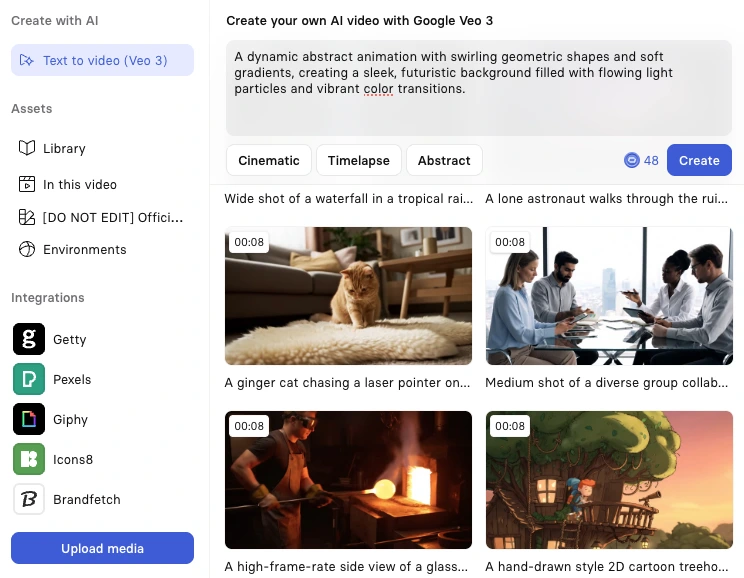
Here are some of the things you can add and change in your AI video without using external video editing tools:
- Images (stock or own)
- B-roll (generated, stock, or upload your own)
- Screen recordings
- Background music
- Shapes
- Text on screen
- Animations, transitions
- GIFs, icons, logos
Step 5: Generate the video
Once you press 'Generate video,' Synthesia renders your scenes, voice, and visuals into a single video.
That's it; you've just made an engaging video using AI. 🔥
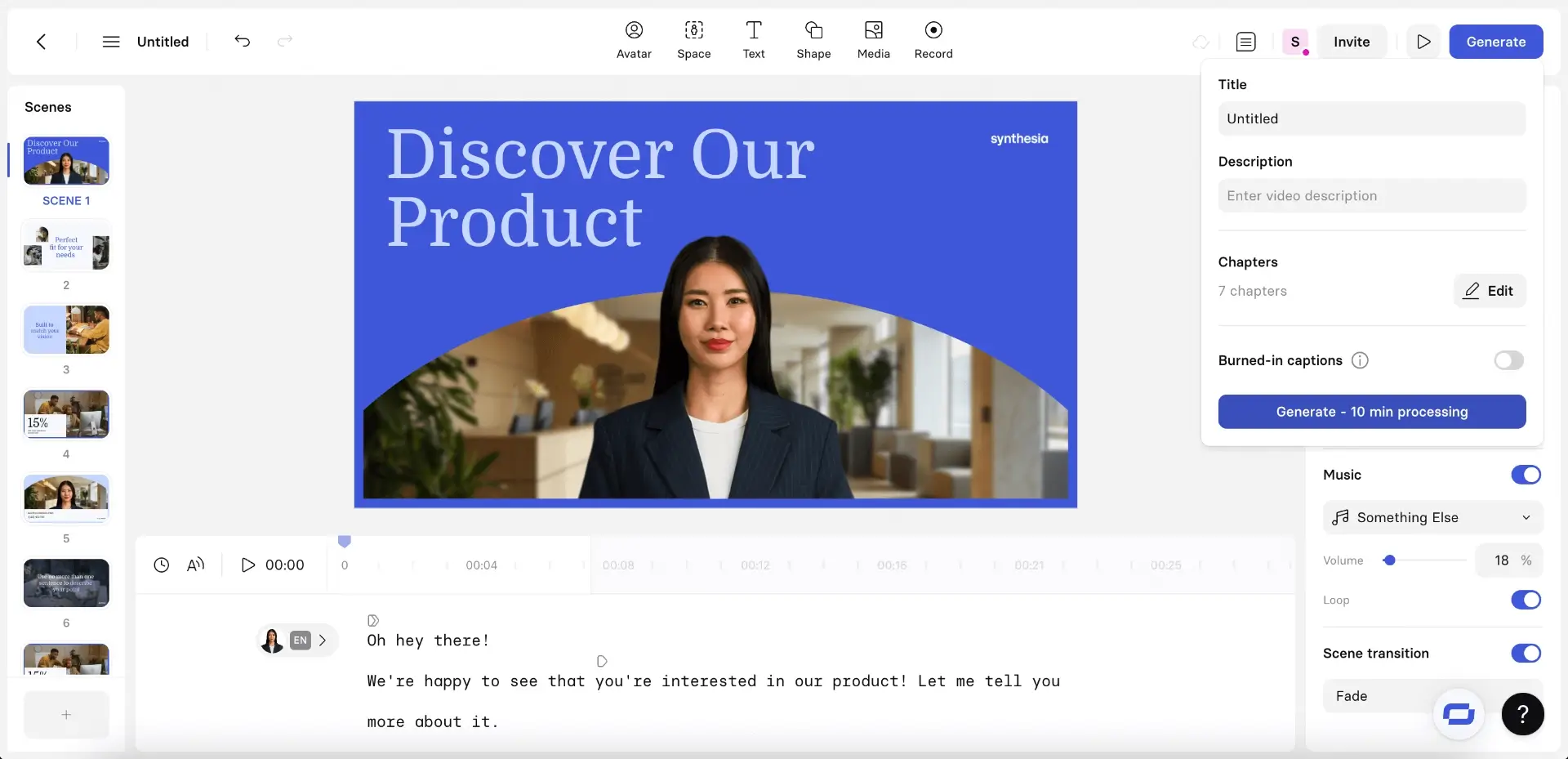
Once the video passes through our content moderation process, you can view it, share it, download it, or embed it (our content moderation helps keep usage responsible; you're always in control of what you publish).
And if you really like it, you can even duplicate it or create a video template from it.
Common use cases and quick wins
Here's how teams are using AI videos to solve real challenges:
- Training and onboarding: consistent, multilingual modules with avatars; reuse templates to update fast
- Product demos: combine presenter + screen recordings; highlight key UI with shapes and text overlays
- Internal comms and announcements: rapid turnarounds; duplicate and version for each region
- Marketing explainers: 60–90 second flow (Hook → Benefits → Proof → CTA) with AI-generated b-roll and captions
- Repurposing: create 6–15 second cut-downs in 9:16 for social
Unlike prompt-only tools, this workflow pairs AI avatars and voices with a full editor—so you can update, localize, and scale videos without reshoots. Ready to transform how you create video content? The future of video production is here, and it's more accessible than ever.
About the author
Content Writer & Marketing Expert
Ema Lukan
Ema Lukan is a seasoned Content Writer and Marketing Expert with a rich history of collaborating with marketing agencies, SaaS companies, and film studios. Her skill set encompasses copywriting, content creation, and a profound understanding of the intricate fabric of brand identity. Ema distinguishes herself not merely as a wordsmith but as a storyteller who comprehends the power of narratives in the digital landscape. Fascinated by new technologies, she navigates the evolving marketing terrain with creativity and analytical precision, leveraging data to refine strategies. Her passion lies in crafting compelling stories that resonate, always mindful of the ever-changing dynamics in the digital world and the culture shaping it.

Frequently asked questions
What tools are recommended for creating AI-generated videos?
We suggests different tools based on the type of AI-generated video you want to create:
- For AI avatars, training, and marketing videos: Synthesia
- For social media and YouTube content: FlexClip
- For creatives and short storytelling: Runway, Kling, Hailuo, Sora, or Luma
What are some common uses of AI-generated videos?
AI-generated videos are increasingly used for:
- Short-form storytelling
- Corporate training
- Social media platforms
- Marketing campaigns
How can I create an AI video?
Creating an AI-generated video is easy with Synthesia. Here's how you can do it:
- Create a Video Script: Draft a concise script for your video. Ensure it's clear and tailored to your audience.
- Select an AI Avatar: Choose from Synthesia's diverse range of AI avatars to deliver your script. This selection can be based on the tone and context of your content.
- Enter Your Text: Input your script into Synthesia's platform. The AI will process this text to generate the video's narration.
- Add Visual Elements: Enhance your video by incorporating images, background music, or other multimedia elements that complement your message.
- Generate and Review: Once you've assembled all components, generate the video. Review it to ensure it meets your expectations, making any necessary adjustments.
Can ChatGPT make AI videos?
ChatGPT cannot directly create AI videos, as it's primarily a text-based AI model designed for generating written content and conversations. While ChatGPT excels at writing video scripts, creating storyboards, and planning video content, it lacks the visual generation capabilities needed to produce actual video files.
To transform ChatGPT's text output into professional videos, you'll need to use specialized AI video platforms like Synthesia that can convert scripts into videos featuring AI avatars, voiceovers, and visual elements. This combination allows you to leverage ChatGPT's writing abilities for script creation while using dedicated video tools to bring those scripts to life as engaging visual content.
Are AI videos realistic?
Modern AI videos have become remarkably realistic, with AI avatars displaying natural facial expressions, lip-sync accuracy, and human-like gestures that closely mirror real presenters. The quality has advanced to the point where viewers often cannot distinguish between AI-generated presenters and actual human recordings, especially when using professional platforms that prioritize photorealistic avatar creation.
The realism extends beyond just visual appearance to include natural-sounding voices with proper intonation, pauses, and emphasis that make the content engaging and easy to follow. This level of authenticity makes AI videos particularly effective for training, marketing, and communication purposes where maintaining viewer attention and trust is crucial for delivering your message effectively.
Can I make an AI video with my face?
Yes, you can create AI videos featuring your own face through custom avatar creation, which involves recording yourself in a professional setting to generate a digital twin that can speak any script you provide. This process typically requires filming yourself speaking specific phrases in good lighting conditions, after which AI technology creates a personalized avatar that looks and sounds like you.
Once your custom avatar is created, you can use it to generate unlimited videos without ever stepping in front of a camera again, making it perfect for scaling your video content production. This capability is particularly valuable for business leaders, trainers, and content creators who need to maintain a consistent personal presence across multiple videos while saving significant time on recording and production.
How do I make an AI video from text, scripts, or documents (PPT, PDF, URL)?
Creating AI videos from existing content is straightforward with modern AI video platforms that accept various input formats including text scripts, PowerPoint presentations, PDF documents, Word files, and even web URLs. Simply upload your document or paste your content into the platform, and the AI will automatically convert it into a video script, breaking it down into manageable scenes that you can then customize with avatars, visuals, and branding elements.
The conversion process intelligently extracts key information from your source material and structures it for video format, though reviewing and optimizing the generated script for spoken delivery will ensure the best results. This approach dramatically reduces video creation time from days to minutes, making it ideal for transforming training materials, presentations, and written content into engaging video formats that better capture and retain viewer attention.










